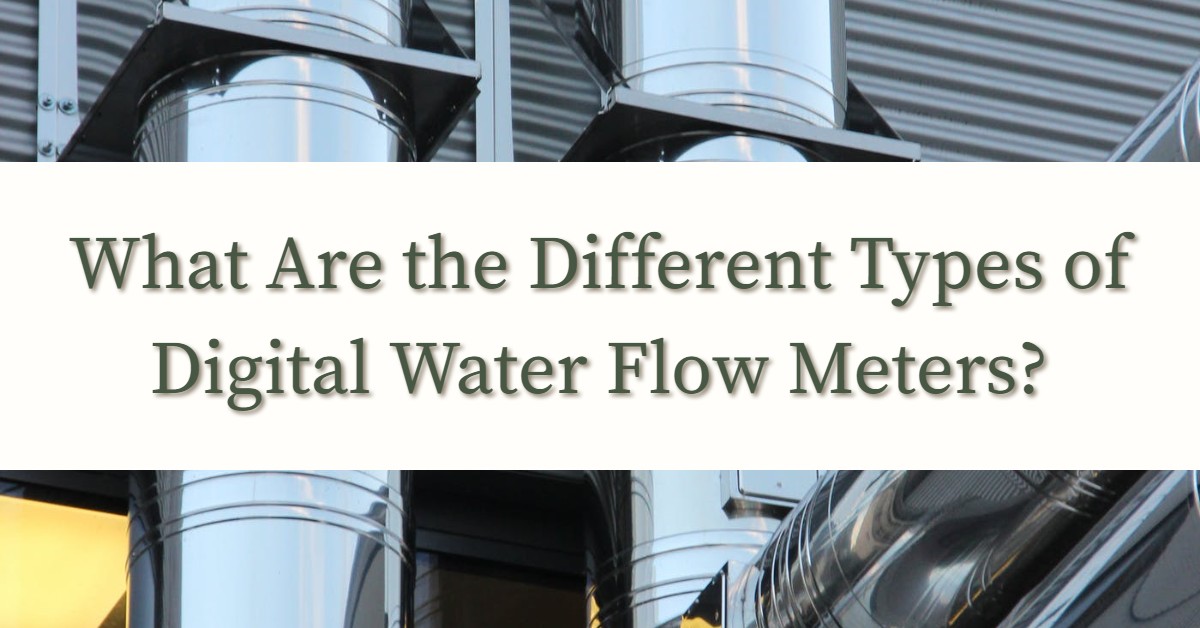Before we even get started, it will be wise to remove the confusion between a water meter and a flow meter. And someone could wonder, “are these synonymous or operate the same way? While the water meter device calculates the volume of water passing through the meter, flow meters measure the speed of that water flowing through the meter.
These come in a wide variety, and you choose the ideal one depending on your applications. First, we have the analog that does well under unfavorable weather conditions, etc. Though they are relatively affordable, they give less accurate measurements than digital meters.
As for digital flow meters, they may be expensive and complex, but they provide higher accuracy and are reliable. A user can store the measurement results electronically, which can help in case of further analysis or record keeping.
The digital instruments include a range of high-tech devices that monitor the flow rate of water flow meters. These may include:
- clean water flow meter
- wastewater flow transmitter
- tap water flow meter
- industrial water flow meter
- irrigation water meter
- digital RO water flow meter
- electronic effluent flow meter
- pure water
- digital portable water flow meter
- wastewater sludge
- raw water flow meter
- chiller water meter
Different Types of Digital Water Flow Meters
Liquid Turbine Flow Meter
They spin the pinwheel using fluid mechanical energy. The design of the rotor blades is intentionally made to use the water force so that the shafts can rotate proportionally to the rate of the liquid flow. A sensor mechanism or magnetic are the two fundamental techniques used to monitor the blade’s rotation rate.
These flow meters are advantageous as they can work effectively in any direction of water flow. They can measure super clean water; tap water flow meters, condensate water, demi hot, pure water, etc.
Magnetic Flow Meters
Physical meters can break easily in the dirty water. As their name suggests, these meters use generated magnetic fields on the streaming water to measure the speed of the flow. Although the meters eliminate the physical parts suspended in water, they are more expensive. However, they provide the best option for wastewater plants.
One of the significant flaws of magnetic meters, their concept can only operate on conductive water and liquids. Otherwise, their material (metal piping) will affect the signal and give an inaccurate volumetric flow rate. But these are most common in industrial settings as the cost is much higher.
Ultrasonic Flow Meter
Ultrasonic instruments measure the liquid flow in a round tube based on the “speed difference method.” A clamp-type transducer flow meter is a non-invasive water flow meter that can measure clean water, tap to well water.
Vortex Flow Meters
These meters use a type of obstruction in the device to measure water flow. And this barrier vibrates back and forth to create a frequency proportional to the volumetric flow rate.
Vortex flow meters can work in various water environments because they are less prone to damage when using slurry water.
Mechanical Flow Meters
Mechanical instruments consist of chambers that obstruct the liquid flow and a rotating mechanism allowing the passing of the fluid through the chamber. The measured fluid gets displaced mechanically in the meter’s body, measuring the fluid flow velocity.
The rate of rotation in the chamber (piston, disk, gear, rotating vane, or diaphragm) determines the speed of the flow.
In Conclusion
Since they are various water flow meters, your selection will primarily depend on the application required. For instance, before you purchase a drinking water meter, it’s prudent to compare the tapping water meters as you consider other things like the cost of the device and installation, replacement, and calibration. And then, you can figure out if the overall value and the lifespan of that device are ideal.



